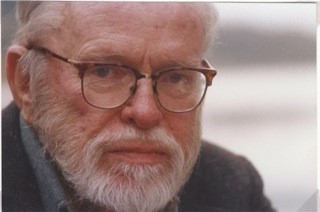
James B. MacQueen
Professor of Management
James B. MacQueen passed away on July 15, 2014, at the age of 85 after a long illness. He is survived by his wife, Ann, their three children, Donald, Kate and Mary, and five grandchildren.
Professor MacQueen lived his academic career on the faculty of UCLA’s Graduate School of Management from 1962 until his death. He earned his bachelor’s degree in psychology at Reed College, Oregon, in 1952 and his master’s of science and PhD, both in psychology, from the University of Oregon in 1954 and 1958 respectively. Prior to joining the faculty at UCLA, Professor MacQueen had a distinguished career that included academic appointments at the University of Oregon and University of California, Berkeley, and at the Western Management Science Institute at UCLA with Professor Jacob Marshak.
Jim’s research interests lay in providing mathematical formulations of human processes. In his first important paper, written in 1960 with Rupert Miller, he investigated a large class of optimal stopping problems. This paper contains, as a special case, the first mention of the house-hunting problem. In Economics, this is called the job search problem or the problem of selling an asset and has spawned a large area of research.
Another field in which Jim was a pioneer is in the development of what he called k-means. This a method of detecting clusters in multivariate data by partitioning the sample space into k sets with small within-class variance. The value of k may also be chosen by the data.
Another interesting invention of his is what Jim called a “linear martingale” and what friends and colleagues call a “Macingale”. This is a sequence of random variables for which the expectation of the next observation given the past observations is a fixed linear combination of the recent past. The main result is a remarkable generalization of Doob’s martingale convergence theorem.
In the area of Markov Processes, Jim had a special love of modelling Markov chains. In describing such chains, one may give the transition probabilities or one may give a balanced set of weights on the arcs. The advantage of using balanced weights is that the stationary distribution (as well as the transition probabilities) may easily be deduced. The trick is to set up the weights in a balanced, meaningful way. In the paper “Circuit Processes” Jim does this by assigning weights to a set of circuits on the states of the chain. These ideas are expanded in a beautiful way in his paper, “Markov Sculpture”.
Jim had an outgoing personality, easily made friends, and was always cheerful and humorous. He was without ego, and always willing to give credit to others. He excelled in giving fresh ideas, sometimes rather outrageous for shock value, for problems that needed to be solved. He loved the out of doors and hiking in the Bighorn Mountains of Wyoming.
He was an avid player of Kriegspiel in Los Angeles, at Berkeley and at scholarly meetings. In Kriegspiel he was known to be daring and willing to try out new strategies. Lloyd Shapley once said that he always learned something from playing Jim. His bright and engaging personality will be missed by all who knew him.
Written by Professor Thomas S. FergusonDepartments of Mathematics and of Statistics, University of California at Los Angeles
